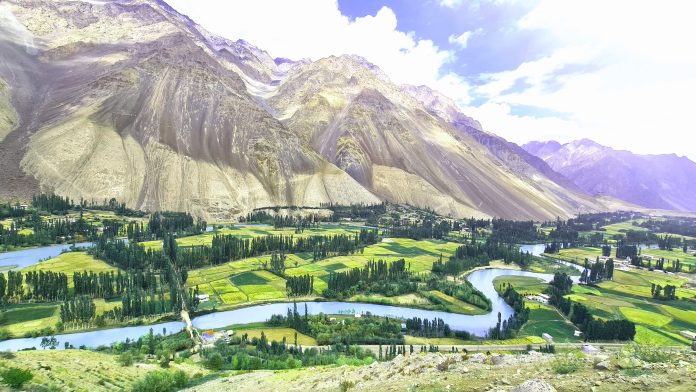In the realm of travel, some places become stars, gracing postcards and brochures, their fame echoing through guidebooks and tourist circuits. However, beneath this glittering surface lies a trove of unsung treasures waiting for the intrepid explorer to discover. These are the hidden gems, the uncharted wonders that lie beyond the well-trodden paths. While Pakistan boasts its share of popular destinations, we embark on a journey to unveil the lesser-known marvels that have long languished in obscurity. These are the places where nature, history, and culture converge in a symphony of wonder, beckoning us to venture off the beaten track and unearth the secrets that have remained hidden for far too long. Join us as we step into a world of unexplored beauty, where every turn reveals a new chapter in Pakistan’s rich tapestry of heritage and nature.
Moola Chotok: Nature’s Hidden Gem in Balochistan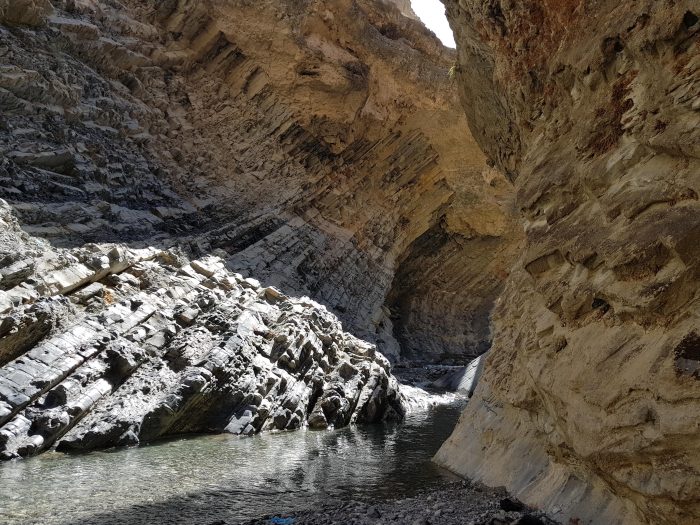
Hidden away amidst the rugged terrain of Balochistan lies Moola Chotok, a pristine oasis of natural wonder. Tucked within the heart of the Khuzdar District, this enchanting destination is a testament to the raw, unspoiled beauty that Pakistan so generously offers to those who seek it.
The Emerald Sanctuary
As you approach Moola Chotok, the landscape transforms before your eyes. Barren mountains give way to lush greenery, and the sound of cascading waterfalls fills the air. The Chotok River, with its crystal-clear waters, meanders through the rugged terrain, bestowing life upon the valley and creating a haven of serenity.
Caverns of Mystery
One of Moola Chotok’s most intriguing features is its network of caves veiled within the hillsides. These ancient grottos, shaped by aeons of nature’s artistry, beckon explorers to venture into their cool, shadowy depths. Each step deeper unveils chambers adorned with awe-inspiring stalactites and stalagmites, bearing silent witness to the passage of time.
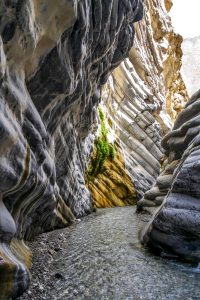
A Symphony of Waterfalls
Moola Chotok is renowned for its breathtaking waterfalls, where nature’s force is on full display. The cascades, like liquid silk, tumble from great heights, creating a mesmerizing spectacle that stirs the soul. Standing in their misty embrace, one cannot help but feel the profound power and beauty of the natural world.
The Warm Embrace of Hospitality
The local community, with their warm hospitality, adds a unique charm to Moola Chotok. Visitors are welcomed with open arms, their presence celebrated with traditional Balochi cuisine and stories that echo through the ages. The camaraderie between guests and hosts creates an atmosphere of genuine connection, leaving a lasting impression on all who pass through.
A Canvas of Stars
As night falls, Moola Chotok unveils yet another dimension of its splendour. Away from the city lights, the night sky here is a breathtaking tapestry of stars. The Milky Way stretches across the heavens, inviting contemplation of the universe’s infinite wonders.
Moola Chotok is an experience of nature’s sublime majesty. It’s a sanctuary where the echoes of time resonate through the caves, waterfalls, and warm hearts of the local community. For those fortunate enough to venture here, Moola Chotok leaves an indelible mark, a memory of the untamed beauty that Pakistan holds.
Katasraj Temples: Echoes of Eternity
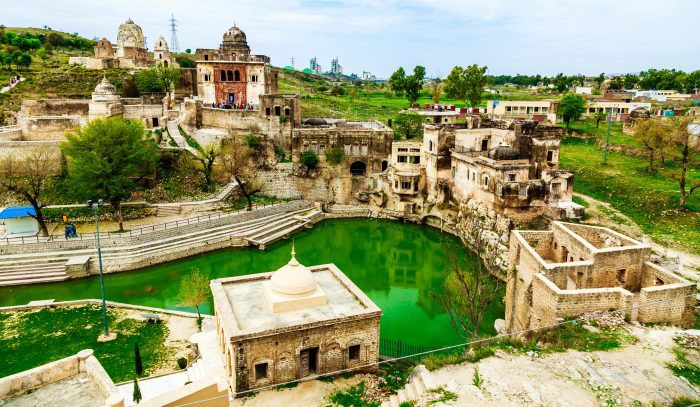
Leaving behind the awe-inspiring landscapes and warm hospitality of Balochistan’s Moola Chotok, we journey further into the heart of Pakistan, venturing towards the Salt Range in Chakwal District. Here, nestled amidst the rugged terrain, lies another sanctuary of serenity and spirituality – the Katasraj Temples. It is a complex of several Hindu temples connected by walkways. This sacred site, with its ancient echoes and ethereal pond, stands as a living testament to the passage of time.
A Tapestry of Time and Faith
According to Hindu legend, it was here that Lord Shiva shed tears of sorrow, creating the sacred pond around which the temples now stand. This ethereal pool, known as Katas, holds not only water but the whispered prayers of centuries. Pilgrims believe that a dip in these blessed waters cleanses the soul and absolves sins, forging a link between the divine and the mortal.
Stones that Whisper Secrets
As you wander through the ancient courtyards, the stones seem to whisper tales of forgotten empires and devout worshippers. Carved with intricate motifs, each pillar stands as a silent sentinel to centuries past. The exquisite craftsmanship is a tribute to the artisans who, with chisel and hammer, etched their devotion into every surface.
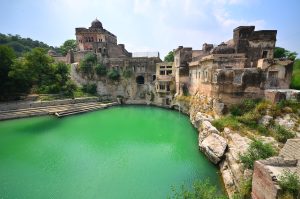 A Testament to Harmony
A Testament to Harmony
The Katasraj Temples, with their amalgamation of Hindu, Buddhist, and Jain influences, are a testament to the interwoven tapestry of faiths that once thrived in this land. They echo a time when diverse beliefs coexisted in harmonious reverence, reminding us that beyond differences lies a shared reverence for the sacred.
A Pilgrimage Through History
Stepping into the Katasraj Temples is akin to stepping into a living history book. Each corner, each chamber, holds echoes of forgotten hymns and ancient rituals. The architecture, with its arches and domes, invites you to walk the paths of those who came before, inviting you to partake in the continuum of devotion.
The Katasraj Temples, far more than a mere architectural marvel, stand as a living testament to the unyielding power of faith and remind us that devotion’s legacy outlasts the transient nature of life, echoing through generations.
Soon Valley: Punjab’s Hidden Eden
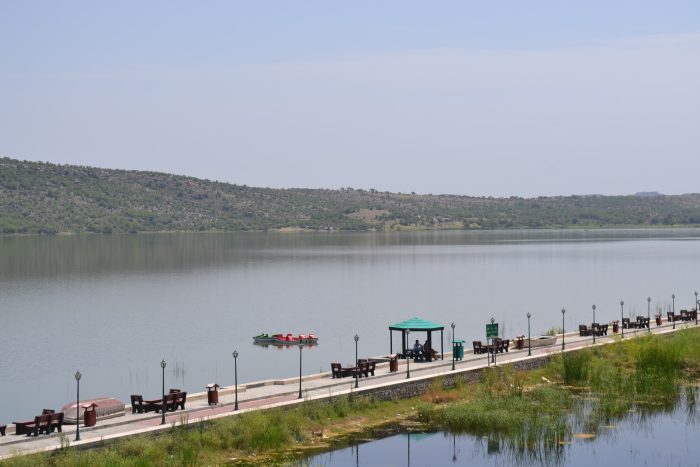
As we journey from the timeless sanctuaries of Katasraj Temples, heading eastward from the spiritual echoes of the Salt Range, we find Soon Valley, a realm of natural splendour and untamed beauty. Remarkably, these two hidden gems are within relatively close reach, their proximity offering travellers the opportunity to delve into the spiritual and historical richness of Katasraj Temples before immersing themselves in the serene vistas of Soon Valley, all within the span of a single journey. This enchanting valley in the Khushab district is a sanctuary for nature enthusiasts, history buffs, and seekers of serenity.
A Tapestry of Verdant Vistas
As you venture into the Soon Valley, the landscape transforms into a kaleidoscope of greenery. Verdant fields, orchards heavy with fruit, and meandering streams paint a picture of nature’s bounty. The Salt Range, with its ancient rock formations, provides a dramatic backdrop to this haven of tranquillity.
Uchhali Lake: A Jewel in the Valley’s Crown
At the heart of Soon Valley lies the Uchhali Lake, a shimmering expanse that mirrors the sky above. Surrounded by lush marshes and reeds, the lake is a haven for migratory birds, making it a paradise for birdwatchers. With its ever-changing hues, Uchhali Lake is a canvas of nature’s artistry.
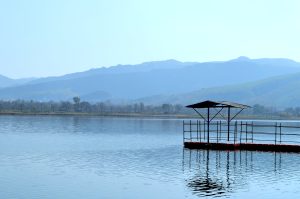 Temples of Satghara: A Testament to Time
Temples of Satghara: A Testament to Time
The Satghara temples, hidden within the folds of the Salt Range, are a testament to the valley’s ancient heritage. Carved from stone, these temples stand as silent sentinels, their intricate designs preserving the legacy of a bygone era. Each pillar and sculpture whispers tales of devotion and craftsmanship.
Kanhatti Gardens: Nature’s Amphitheater
Tucked away in the heart of the valley, the Kanhatti Gardens offer a respite for weary travellers. Lush green lawns, bordered by ancient banyan trees, create an amphitheatre of nature. Here, the air is scented with the fragrance of blossoms, and the rustle of leaves provides a gentle soundtrack to moments of contemplation.
Soon Valley is a testament to the resilience and beauty of nature. It is a sanctuary where the rhythms of life echo through the hills and waters. For those who venture here, the valley offers a respite from the clamour of the world, inviting them to bask in the serenity and wonder that Punjab so generously provides.
Garam Chashma: Chitral’s Thermal Paradise
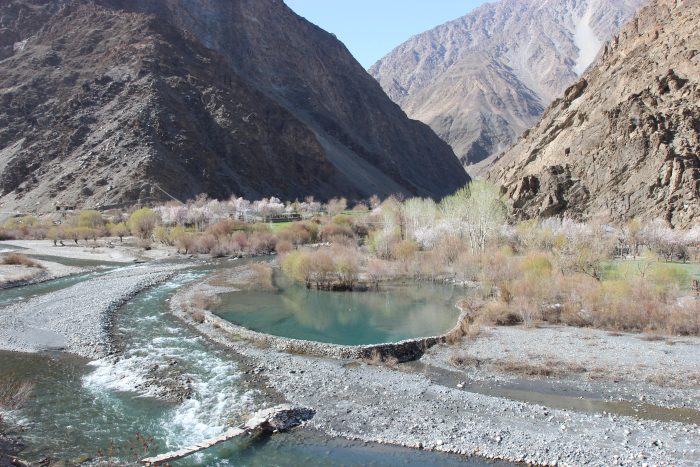
Leaving behind the serene vistas of Soon Valley and the ancient mysteries of Katasraj Temples, our journey takes an adventurous turn as we venture further north towards the rugged grandeur of Chitral. Here, amidst the embrace of ancient Hindu Kush mountains, Garam Chashma reveals itself as a hidden treasure. This pristine valley, cradled within the formidable embrace of the Hindu Kush, holds secrets of healing and rejuvenation waiting to be discovered by intrepid travellers.
A Fountain of Healing Waters
Garam Chashma, literally translating to “hot spring,” lives up to its name with natural thermal springs that flow from the depths of the earth. The mineral-rich waters, warmed by subterranean geothermal activity, have earned a reputation for their therapeutic properties. For centuries, people have sought solace and restoration in these soothing pools, believing in the waters’ ability to soothe ailments and invigorate the spirit.
Nature’s Symphony: The Valley of Wildflowers
As you journey deeper into Garam Chashma, the landscape transforms into a vibrant mosaic of colours and scents. Wildflowers, in hues ranging from delicate pinks to fiery oranges, blanket the valley floor, painting a vivid picture of nature’s artistry. The air is filled with the sweet fragrance of blossoms, and the gentle hum of insects provides a serene backdrop to this tapestry of life.
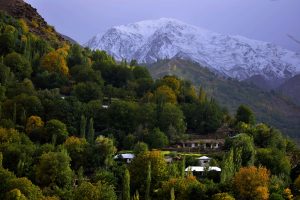 The Call of the Himalayan Peaks
The Call of the Himalayan Peaks
The towering peaks of the Hindu Kush, a mountain range known for its majestic beauty and formidable challenges, cradle Garam Chashma. Enthusiasts of trekking and mountaineering will find themselves drawn to these summits, where the air is thin, and the vistas are nothing short of breathtaking. Each step towards the heights is a testament to human determination and nature’s grandeur.
A Cultural Tapestry: The Kalash Connection
Nearby, nestled in the valleys of Birir, Bumburet, and Rumbur, live the Kalash people, a unique and ancient tribe. Their vibrant festivals, distinctive dress, and rich folklore offer a fascinating window into a culture that has endured for millennia. A visit to Garam Chashma provides an opportunity to witness this living heritage and forge connections with a community deeply rooted in the land.
Garam Chashma is more than a destination; it is an invitation to reconnect with nature’s bounty and the ancient rhythms of the earth.
Phander Valley: Jewel of Gilgit-Baltistan
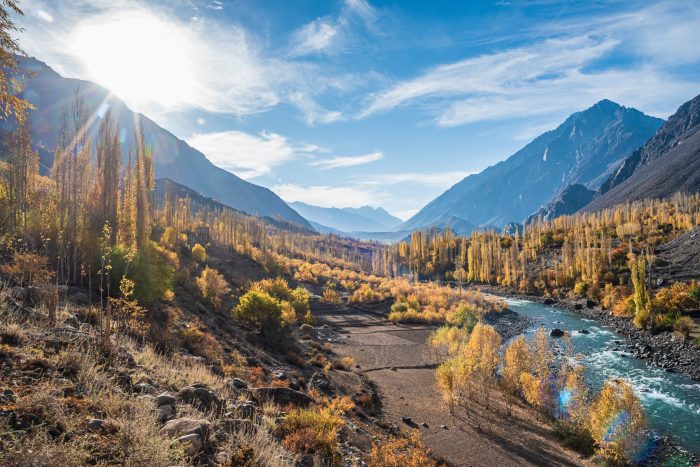
As we ascend northwards through the formidable peaks of the Hindu Kush, leaving behind the therapeutic embrace of Garam Chashma the landscape undergoes a transformation, revealing new wonders. It is amidst these towering mountains that Phander Valley, a hidden gem in the Ghizer District of Gilgit-Baltistan, patiently waits to reveal its own enchanting beauty. This pristine gem, cradled by the grandeur of the Hindukush Range, is a testament to the raw, unspoiled magnificence that the region so generously bestows. The path from Chitral to Phander Valley promises not only breathtaking scenery but also a journey through the diverse landscapes that define the majesty of Pakistan’s northern regions.
A Symphony of Turquoise Waters
The Phander Lake, like a sapphire set amidst emerald meadows, is the heart and soul of this valley. The waters, colored a mesmerizing shade of blue, reflect the surrounding peaks, creating a scene of breathtaking serenity. Encircled by verdant pastures, the lake exudes an aura of tranquillity, inviting visitors to lose themselves in its mirrored embrace.
Meadows that Touch the Sky
As you venture further into Phander Valley, the meadows unfurl before you in a panorama of green. The alpine grasslands, dotted with wildflowers of every hue, seem to stretch towards the heavens. Here, where the earth meets the sky, one feels the boundless embrace of nature’s grandeur.
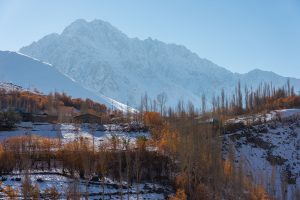 Nomadic Culture: The Spirit of the Mountains
Nomadic Culture: The Spirit of the Mountains
Phander Valley is home to a resilient and ancient nomadic culture. The Gujars, Wakhi, and other ethnic communities have called these highlands their home for generations. Their lives are woven with the rhythms of the seasons as they tend to their flocks amidst the rugged terrain. A visit to Phander offers a glimpse into this way of life, where self-reliance and communal bonds reign supreme.
Tryst with Wildlife: The Deosai Connection
The Deosai National Park, often referred to as the ‘Land of Giants,’ is a stone’s throw away from Phander. This high-altitude plateau, known for its diverse flora and fauna, provides a habitat for several endangered species, including the Himalayan brown bear. The chance to witness these majestic creatures in their natural habitat is a rare and humbling experience.
Phander Valley is more than just a destination; it is an ode to the untamed beauty and vitality that Pakistan holds. For those fortunate enough to venture here, Phander Valley leaves an indelible mark, a memory of the boundless wonders that grace this earth.

